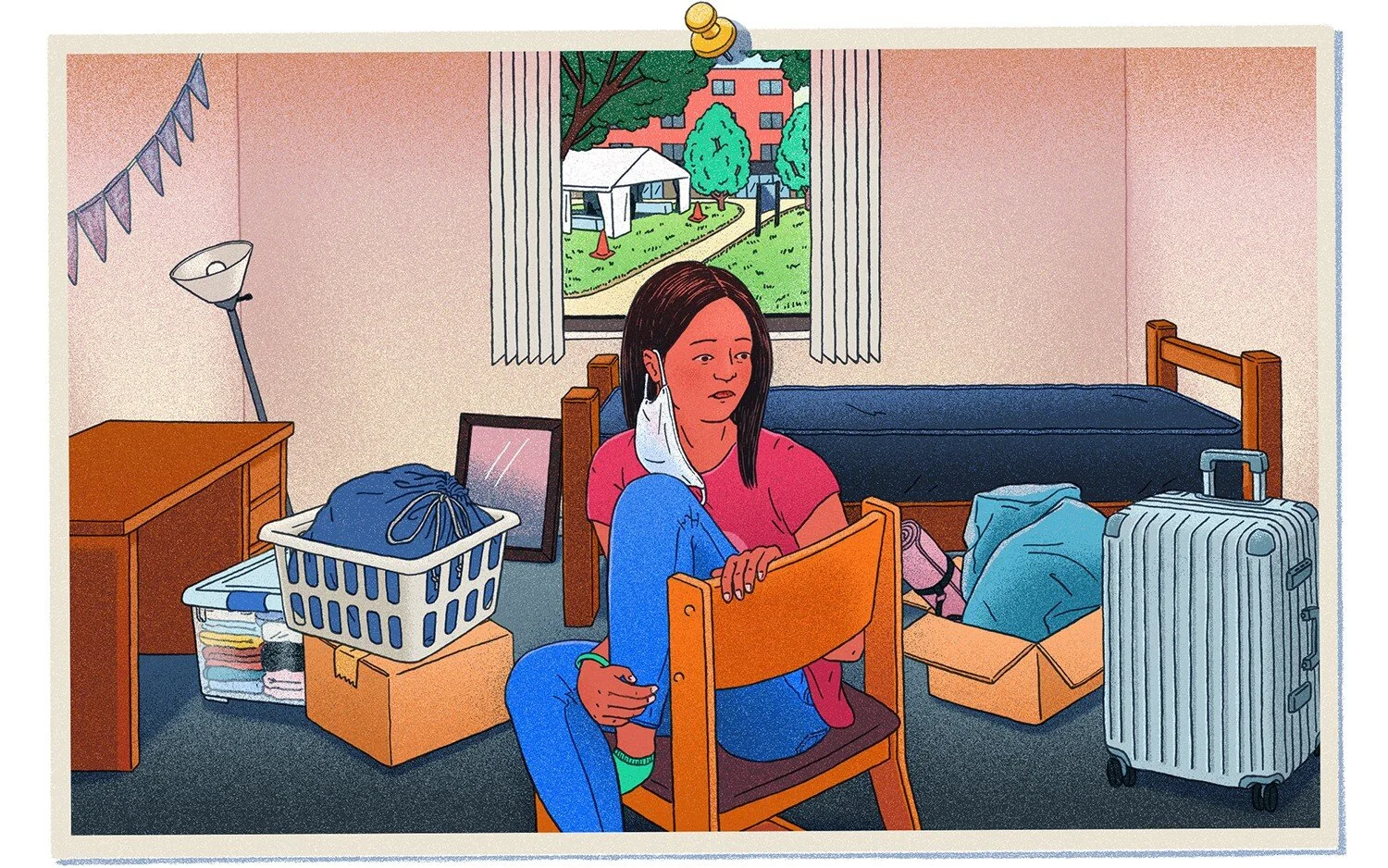Hello? I Think We’ve Lost Our Connection
As the school year begins, many are worried about the impacts of social distancing and virtual learning on our social lives.
Masks cover most of our faces, hiding many of the facial cues we use to communicate with others. The difficulties inherent in video conferencing (such as blurring, freezing, jerkiness, out-of-sync audio) create a confusing environment for people to interact in. Both options are completely new ways of connecting that seem to work on the surface. But there’s a reason why they make you feel uneasy, even if you’re socializing with others.
The problem is that these disruptions, whether it’s a mask covering someone’s face or glitches in a video call, scramble subtle social cues we use in day-to-day conversation. Our brains have to struggle to fill in the gaps: is that person glaring at me or just looking around? I can’t tell because their mask has covered their mouth. Are they subconsciously judging me because the lighting makes my face look like a skeleton? I hate video calls.
We may attempt to fix these problems through using only video conferencing (where one can see the entire face without a mask) with better connection and better lighting. But while this may fix the video quality and eliminate disruptions to some extent, we may still feel discomfort when we speak because it feels like everyone in the call is staring at you, and we are all hyper-aware of our appearance when our cameras are turned on. It seems like there isn’t a true way to mimic casual conversation from daily life virtually without feeling slightly awkward.
An alternative solution to maintain casual conversation over long distances is simply making phone calls instead of video calls. This may sound obvious: after all, anyone can call others at only the touch of a button — why would someone choose to eliminate the facial aspect of communication? Isn’t seeing each others’ faces exactly what we’re missing? In reality, phone calls take away the slight awkwardness of face-to-face calls because you can communicate only through voice. Facial expressions cannot be misconstrued, which means there are less likely to be feelings of discomfort and confusion. As experts have said, no facial cues are better than faulty ones.
The best part of phone calling is the casual atmosphere. The biggest difference between video and voice is that you don’t need to care about your appearance. Voice calls allow for an additional layer of privacy; it’s a non-intrusive way to keep in touch with others if you’re uncomfortable with showing your face or your background. Voice calls also mimic pre-pandemic social interactions; a friend’s voice is less likely to change than their appearance, providing a sense of stability and familiarity that puts you at ease.
As you chat with someone on the phone, you may become aware of the slightest details. Putting the phone right next to your ear makes your brain subconsciously sense that there is a person close to you physically, and unlike video calls, you can hear the slight nuances and changes clearly. When video is eliminated, you become more focused on the things they are saying, and you can pick up subtle shifts in expression through breathing patterns, slight tone shifts, and the occasional hesitation. When it comes to developing relationships in isolation, sometimes it’s better to be heard and not seen.











